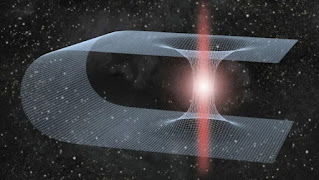Due to Einstein's second postulate, manned interstellar voyages are deemed near impossible. However, wormholes could enable swift navigation to remote cosmic regions, much like the scenarios portrayed in science fiction films where interstellar journeys are made possible by these black hole-produced structures.
Wormholes could facilitate the transport of a spaceship and its crew, who would emerge unharmed in remote corners of the universe or even an alternate universe within an instant.
Wormhole Travel: The Counterarguments
Nonetheless, there are three primary arguments against interstellar travel via wormholes.
The first argument implies that the event horizon can be described as a space-time zone from which no events can be perceived. It thus acts as a one-way membrane, allowing objects to enter but not exit to a different part of space.
The second argument suggests that the exit point, where the spaceship would emerge post black hole horizon crossing, couldn't be another black hole as it would function inversely, enabling a spaceship to exit.
The third argument posits that a black hole's intense tidal gravitational forces create a massive relative acceleration between a spacecraft's nearest and farthest points at the event horizon. These tidal forces could "spaghettify" anything in close proximity, making not just interstellar travel, but also the preservation of the spaceship and its crew, unfeasible.
Despite these objections, wormholes captivate both scientists and casual enthusiasts alike, even though their existence in our universe remains uncertain.
Emerging theories suggest multiple methods of detecting wormholes, such as observing a surge of high-energy particles when the interstellar passage is formed.
Suppose a wormhole does exist, how would it function? Let's momentarily set aside the arguments against their existence and try to comprehend them.
A wormhole is a conduit linking two far-flung locations in the universe, potentially navigable within a fraction of a second. This entity, referred to more technically as an "Einstein-Rosen bridge", is conceptualized via general relativity.
The Existence of Wormholes: A Scientific Enigma
While we possess mathematical equations that describe wormholes, their actual existence remains unknown. Furthermore, knowing how to use these theoretical passages for travel is an unresolved mystery. Over the years, many physicists have proposed theories to create a usable wormhole, but these suggestions have been unsuccessful so far.
The Instability of Wormholes
Wormholes are incredibly volatile. When a single particle, such as a photon, passes through, the wormhole collapses instantly at light speed, transforming a potential shortcut into a lethal trap.
The Dilemma of Negative Mass
To keep a wormhole from collapsing, you would need a kind of matter with negative mass. Unfortunately, such matter doesn't exist naturally, causing theorists' dreams of hyperspace travel to fade.
The Persistent Pursuit of Working Wormholes
Despite the challenges, theorists continue to explore possibilities. A recent study in the preprint journal arXiv suggests a potential "working" wormhole via a novel technique.
The Particle Decay Theory
The theory proposes that if a particle with high enough energy falls into a newly formed wormhole, it could decay into two new particles. One particle might escape through the wormhole, while the other could be reflected back due to the peculiar physics inside these tunnels.
The Collision of Particles
A new particle entering the wormhole could collide with the reflected particle. The study suggests that this collision could generate extremely high energy.
The Energy Signature of a Wormhole
The outcome might be a burst of high-energy radiation at our end of the wormhole, a telltale sign of a newly opened wormhole.
Peering into the Universe Through Wormholes
Now, knowing that this particle shower is possible, maybe we can gaze into the wormhole to observe distant locales in the universe or even in other universes, and perhaps one day, reach them.


Post a Comment